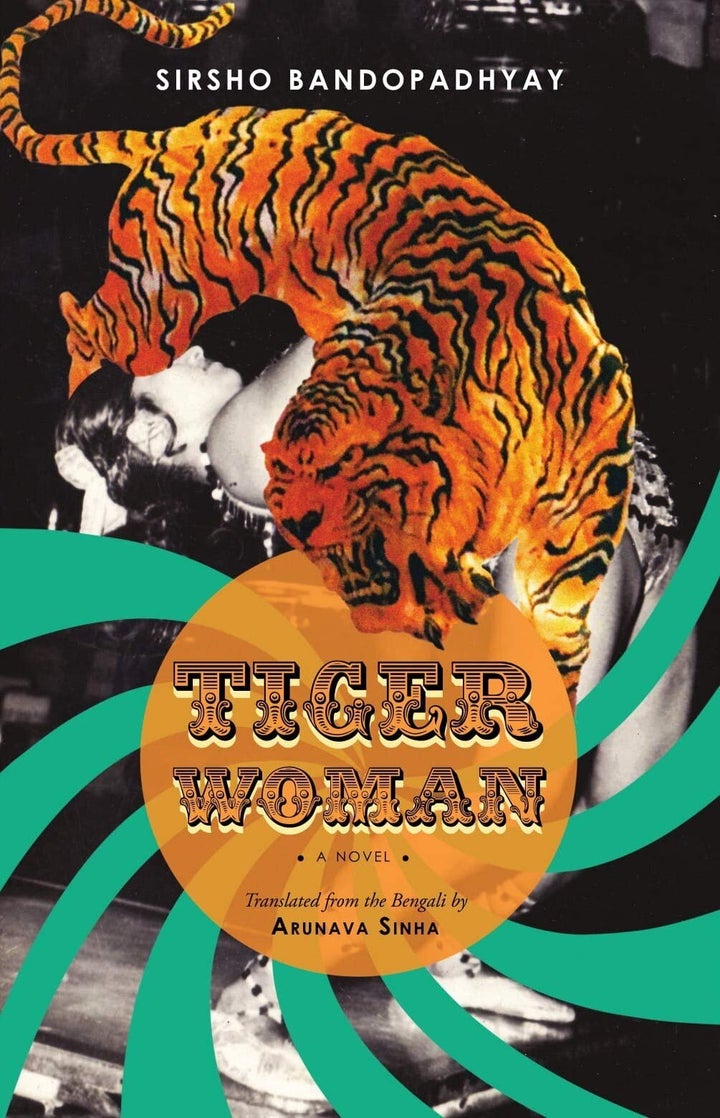
Tiger Woman, the English translation of Sirsho Bandopadhyay’s Bengali novel Shardulsundori by Arunava Sinha, is a book with a broad canvas, spanning a period of nearly fifty years, from 1872 to 1920. Set in places as disparate and distant as Kolkata, Haridwar, Multan, Rajasthan, Jammu, Ujjain, Agartala, and Singapore, it also hosts an equally wide cast of characters. Its 46 chapters (plus prologue) host a plethora of famous people from Bengal’s history — each one instrumental in carrying the plot forward — with cameos by people like Ramkrishna Paramhans, Narendranath Dutta (before he became Swami Vivekananda), Governor General Lord Dufferin, and Harimohan Roy (Raja Rammohan Roy’s nephew). Despite its span and detail, the novel’s crisp and engrossing narration keeps the reader on track of the plot even as it moves ahead purposefully with its menagerie of people, events, and animals which, in lesser hands, would have probably not been as effective.
The book’s chapters — wisely kept short — each describes one incident in any particular year, but are not chronologically placed. For example, there are three consecutive chapters on three incidents that took place in three different places in the same year: 1885. The next chapter, however, jumps back seven years to 1878 while the chapter after that returns to 1885. This style could have been jarring, but not in Tiger Woman. A narration rich in history and emotions ensured that this reviewer was not at all bothered by the repeated jumps in the timeline. On the other hand, the apparently haphazard placement of chapters somehow start making sense as the theme of the novel — the reclamation of the glory of the Bengalis through native circuses — is expressly presented in the opening chapters itself.
Tiger Woman, if one goes by its cover copy and its title, might seem like a story of the battle of the genders and passion play in a workplace — a circus, in the case of this novel. There is even a sub-plot about the relationship between the “tiger woman” and her mentor. But, before anything else, Tiger Woman is a brilliantly written historical novel about the creation of the first Bengali circuses at a time when gymnasiums and physical fitness were considered to be a “disgrace to…families” and “promoting hooliganism”. In Bandopadhyay’s novel, there are driven Bengali men – both young as well as elderly – who believe that “[it] wasn’t enough to build physical prowess and acrobatic skills; having a platform to present them to the public could serve to bolster the confidence of the Bengali race.”
The novel’s protagonist is Priyanath Bose, founder of the Great Bengal Circus, one of the first circuses to have only Indians as its performers when most circuses in the subcontinent were owned and headed by either the British or the Americans. Priyanath was the “youngest son of Manomohan Bose, the renowned nationalist poet and playwright”. Coming from a privileged background, “Priyanath [was] instrumental in setting up some fifty gymnasiums in Calcutta and its surrounding villages”. His motive in creating an indigenous circus was to prove that the Bengalis “were second to none when it came to prowess and valour.”
In the late-1800s, the period in which Tiger Woman is set, nationalism was the order of the day. Acrobatics and physical fitness – two traits that the Bengalis are probably not known for – became nationalistic tools as circuses were used to “enable Bengalis to establish their identity as a race.” As a show of the Great Bengali Circus ended with the spectators shouting, “Long live Bengalis! Long live Bharat,” this reviewer could not help studying the spirit of nationalism of that time against the nationalism espoused by the majority today. In the novel, nationalism begins dominating entertainment and display of physical skills – quite like the present times – when Priyanath insists that a subtext of freedom struggle be brought into a magic show of the Great Bengal Circus even though Ganapati Chakraborty, a magician described as “the pioneer of modern magic in Bengal”, is not comfortable with it.
The eponymous “tiger woman” makes an appearance much later in the novel. Sushila, a protégé of Priyanath, and her sister Kumudini are orphans practically raised by the circus founder from their childhood. He trains them in acrobatics and equestrianism, enrolling them as performers in his circus. Sushila hero-worships and loves Priyanath despite knowing he is a married man. The “tiger woman” goes on to attain fame as Sushila Sundari, one of the first Indian women to perform in a circus. “[Many] people in the audience…fainted” watching her act with two live, full-grown tigers. Priyanath would end up arranging for smelling salts at their circus shows!

Two aspects in this account of Priyanath Bose’s life and his circus stand out. First, it is amazing to see how quickly people matured in those days. Priyanath is only 17 when he decides to use circus as a tool of nationalism and to boost the morale of his community. In the present day, a 17-year-old is not even eligible to vote! Second, every man involved in running circuses in this novel is invariably from the upper caste, with surnames likes Bose, Mitra, Ghosh, and privileged backgrounds. There is one token low-caste character in the novel: Aul Charu, a friend of Priyanath Bose.
Writing a novel like Tiger Woman was certainly not an easy task, and translating it must have been as humongous. Sirsho Bandopadhyay and Arunava Sinha have brought to life an intriguing side of Bengal’s – and India’s– history. Tiger Woman is quite an accomplishment and a must read.